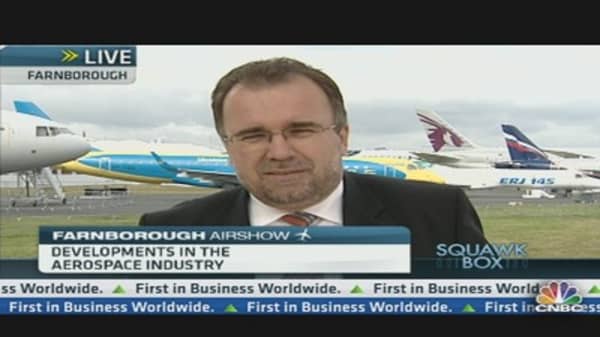The Mars space probe built by Siemens is an “iconic example” of what the technological industry can provide to global aerospace development, Siegfried Russwurm, the CEO of Sector Industry Sector at Siemens told CNBC.
Using technology developed by the software engineering firm Siemens, NASA developed its most advanced roving probe, "Opportunity", a robotic vehicle sent to the planet in 2003, to transmit images back to earth during the Mars Exploration Program. Initially sent for only three months, Opportunity has surpassed technological expectations and has now spent more than 3000 days on its reconnaissance mission of the “Red Planet”.
Speaking to CNBC’s “Squawk Box Europe” at the Farnborough International Airshow, Russwurm said that Siemens had provided NASA with the technological “tool box for the engineers to design the rover on the Mars example, test and produce it”, and that beyond space exploration the technology could also be put to use by the aeronautical industry.
“This is an iconic example for what we can provide to industry, and especially for aerospace industry. It helps our customers to be faster and more cost effective in designing new products and making them into new products via the production chain.”
Russwurm said that despite the China slowdown, weakening demand for technology and global economic crisis, there was longevity in the aeronautical industry.
“We strongly believe that the aerospace industry is a growing vertical in the long run. It may be bumpy every now and then but in the long-run, growth potential is there, double digit what we believe and if we can prove in a project like the Mars robot that we are top-action technology, and this is what it really is, then we hope that we can even more convince our customers and the aerospace industry to use our software.”
Joining the ‘Opportunity’ rover is a new generation of space explorer, "Curiosity", a rover packed with the latest technology and five times the size of Opportunity and its now-defunct partner rover "Spirit", that is due to land on the planet in one month.
Though there are concerns that the one-ton rover will not land in one piece as it parachutes(to slow an otherwise 1000mph descent) down to the surface. In a promotional video of the launch in November entitled "Seven Minutes of Terror", one of NASA's engineers, Tom Rivellini, at the organization's 'Jet Propulsion Laboratory says he and team have dubbed the landing to be “seven minutes of terror” as they wait to see if the probe, and its precise computer technology, survives the descent.
Russwurm, however, said there were Siemens many engineers working on the “technological challenges” of the launch.
“We have many engineers working on the technical challenges up to the last minute of the landing that will be thrilling for all of us”, he said.
“Our contribution is that we help to make sure this rover really functions under very adverse environmental conditions. These conditions you can’t test them here on Earth, you have to put together a highly sophisticated test environment into a digital world. Let’s see how the real world can respond to that.”




